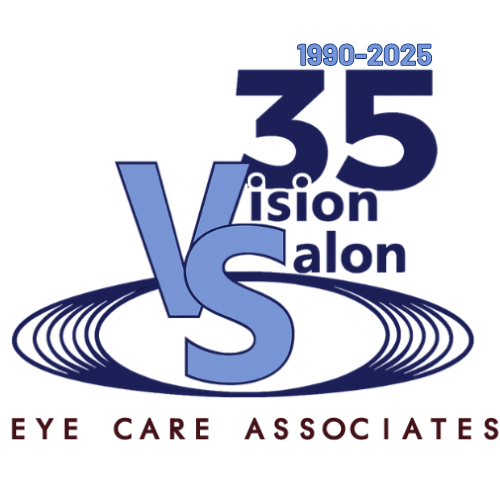If you’ve recently learned that your child is nearsighted, you might be wondering what exactly that means and what you can do about it. Nearsightedness, or myopia, is a vision problem that occurs when the eyeball is too long or the cornea is too curved. This causes light to focus in front of the retina instead of on it, making distant objects look blurry while up-close objects remain clear.
Myopia in children usually worsens over time and can increase their risk of developing serious eye diseases later in life. However, there are ways to manage or control it, including myopia management. Here’s everything you need to know about nearsightedness in children.
What causes myopia?
Genetics plays a role in the development of myopia, but it is not the only factor. Children with nearsighted parents have a higher risk of developing myopia—about twice as likely if one parent is nearsighted and up to five times more likely if both are.¹
Spending long periods on near-work activities, such as reading or using digital devices, especially at close distances (less than 30 cm), has been linked to an increased risk of developing myopia.¹ Sessions lasting more than 30 minutes at a time may further raise this risk.
On the other hand, studies show that spending more time outdoors—at least 40 minutes a day—can help reduce the chances of a child developing nearsightedness.¹ Poor lighting can also contribute, so balancing screen time, near work, and outdoor activity is key.
What are the symptoms of myopia?
The most common symptom of myopia is difficulty seeing distant objects clearly. This can make it hard for your child to see the blackboard at school or recognize people’s faces from a distance.
Other common symptoms of myopia include²:
-
Squinting to see distant objects
-
Frequent headaches
- Constant blinking
-
Eye strain or fatigue after visual tasks
-
Sitting too close to the TV or holding books or screens very close
-
Rubbing their eyes often
Myopia can also impact your child’s academic performance, sports activities, social confidence, and overall independence.
If you notice any of these symptoms, schedule an appointment with a pediatric optometrist as soon as possible. Our eye doctors have extensive experience diagnosing and treating myopia in children, and we can recommend proven techniques for slowing its progression.
Can myopia be cured?
There is no cure for myopia, but options are available to help slow its progression and improve vision. Slowing myopia is important because higher levels of nearsightedness can increase the risk of serious eye conditions later in life, such as retinal detachment, glaucoma, and cataracts.
At Vision Salon Eye Care Associates, our knowledgeable and experienced eye doctors and staff can help you decide which method is most suitable for your child, depending on their needs, lifestyle, age, and myopia level. Treatments can include special contact lenses, such as orthokeratology, or low-dose atropine eye drops.
Help your child maintain clear vision
If your child has been diagnosed with myopia, you might be feeling a little overwhelmed. But don’t worry! By familiarizing yourself with the condition and knowing what treatments are available, you can help your child manage their nearsightedness and maintain good vision for years to come.
Schedule an appointment at Vision Salon Eye Care Associates today to find out if myopia management could be the right solution for your child.
References:





